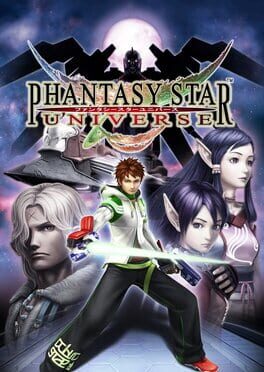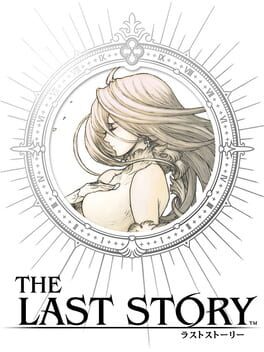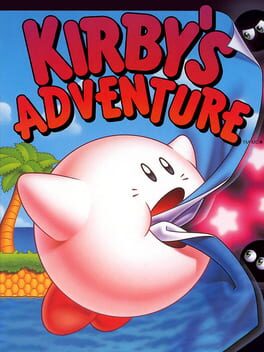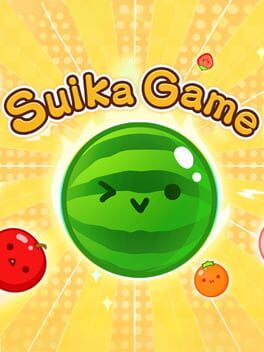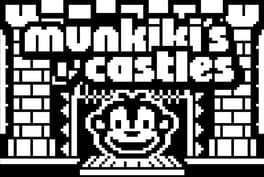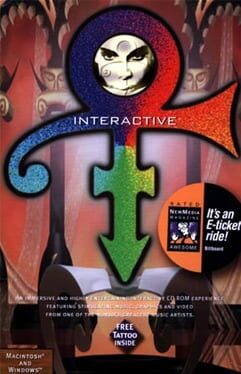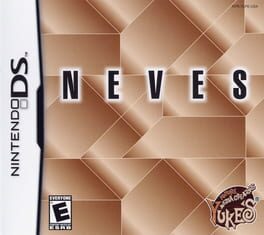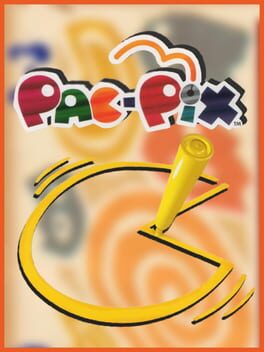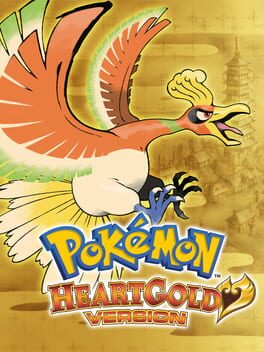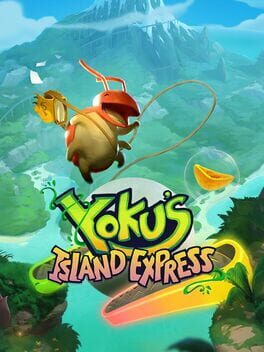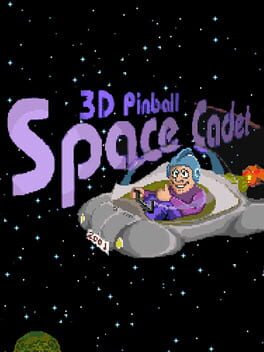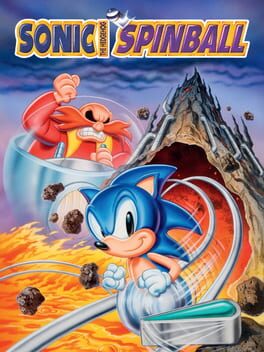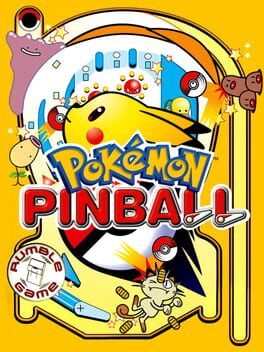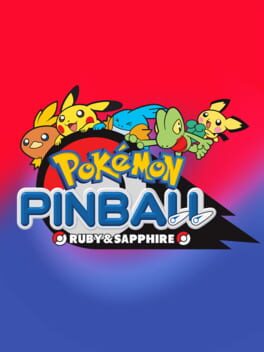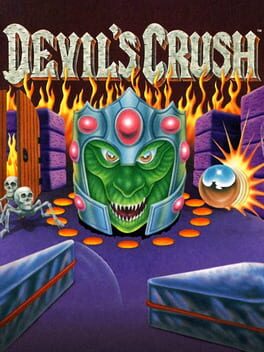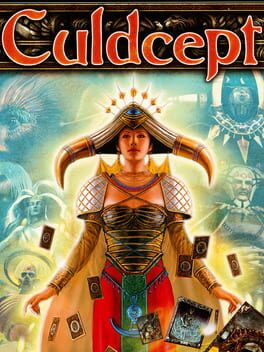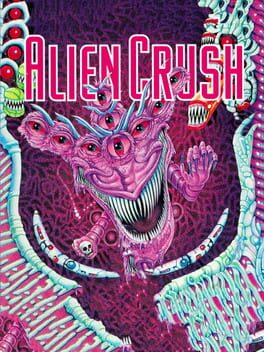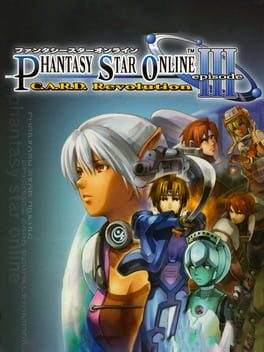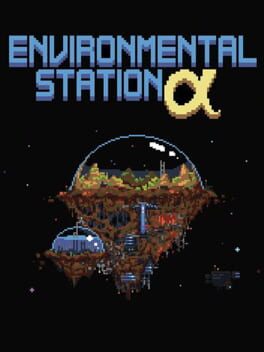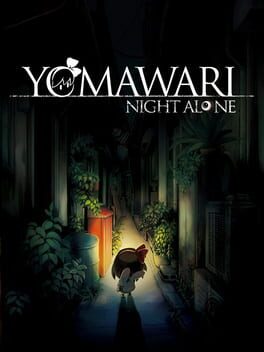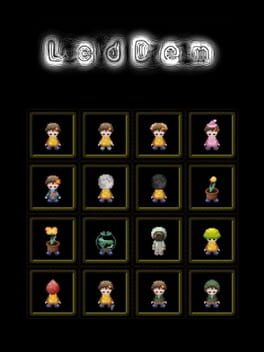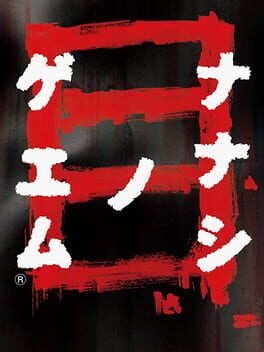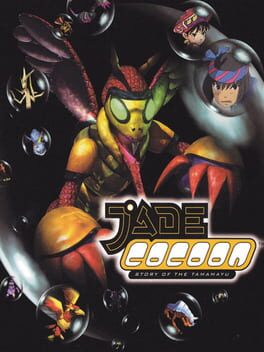flac
11 reviews liked by flac
Man, I have some feelings about Phantasy Star Universe, a lot of them nebulous and uncomfortable. Everybody has that one video game where they in retrospect realize is really bad, but it doesn't stop you from pouring dozens if not hundreds of hours into it just because it evokes a certain pathos from you.
I got drafted into playing PSU because of a psychotic friend who has thousands of hours in the X360 version. I ended up putting a few hundred in myself. Then we watched the world end together as the servers came to a solemn close. Cue several years and one privately-run server later, PSU is back! But I'm well past the age of thinking this game is good, so I'm happy the private server exists. ...Alright fine, so I started playing it again.
And I don't know why I have, because again, this isn't a good game! It's not bad, but it's very very old. The combat is mindless button-mashing and corralling enemies into groups to slaughter them with. There's no dodge or block or dash button. Guns have an arbitrary ammo system that just makes them straight-up suck to use. Techniques and photon arts only leveled up the more you used them which lead to shitloads of grinding and "buff parties". The weapon-leveling system could fail and destroy your weapon permanently. There's just a lot of needlessly obtuse and mean-spirited systems present in the game. So why play it?
Phantasy Star Online remains one of my favorite games of all time, and this game feels like a step sideways for a Dreamcast-to-X360 game. Honestly I couldn't tell you which game plays better, which is either a testament to how well PSO's aged or a testament to how terrible PSU is. But the vibe remains similar. There is a cool dystopian future vibe to the entire game, with locales overrun with monsters and enemies, and bastions of civilization seeming sparse and empty due to it being relative to how many real-world players occupy each area. The music is still pretty solid (but still incapable of touching PSO) and the general art direction is still pretty evocative.
Phantasy Star Universe was meant to be a follow-up to Phantasy Star Online's enormous legacy, but it's a game that does pretty much everything just as well or worse than a game that came out 6 years ago. It's a sidegrade to a game that precedes it by a whole generation. With the Portable games improving on PSU's formula and PSO2 going in a separate direction that felt faithful to PSO, Phantasy Star Universe is just going to occupy an awkward part of Sega's history.
Anyways, I'll be on it if anybody needs me.
I got drafted into playing PSU because of a psychotic friend who has thousands of hours in the X360 version. I ended up putting a few hundred in myself. Then we watched the world end together as the servers came to a solemn close. Cue several years and one privately-run server later, PSU is back! But I'm well past the age of thinking this game is good, so I'm happy the private server exists. ...Alright fine, so I started playing it again.
And I don't know why I have, because again, this isn't a good game! It's not bad, but it's very very old. The combat is mindless button-mashing and corralling enemies into groups to slaughter them with. There's no dodge or block or dash button. Guns have an arbitrary ammo system that just makes them straight-up suck to use. Techniques and photon arts only leveled up the more you used them which lead to shitloads of grinding and "buff parties". The weapon-leveling system could fail and destroy your weapon permanently. There's just a lot of needlessly obtuse and mean-spirited systems present in the game. So why play it?
Phantasy Star Online remains one of my favorite games of all time, and this game feels like a step sideways for a Dreamcast-to-X360 game. Honestly I couldn't tell you which game plays better, which is either a testament to how well PSO's aged or a testament to how terrible PSU is. But the vibe remains similar. There is a cool dystopian future vibe to the entire game, with locales overrun with monsters and enemies, and bastions of civilization seeming sparse and empty due to it being relative to how many real-world players occupy each area. The music is still pretty solid (but still incapable of touching PSO) and the general art direction is still pretty evocative.
Phantasy Star Universe was meant to be a follow-up to Phantasy Star Online's enormous legacy, but it's a game that does pretty much everything just as well or worse than a game that came out 6 years ago. It's a sidegrade to a game that precedes it by a whole generation. With the Portable games improving on PSU's formula and PSO2 going in a separate direction that felt faithful to PSO, Phantasy Star Universe is just going to occupy an awkward part of Sega's history.
Anyways, I'll be on it if anybody needs me.
The Last Story
2011
When I bring up the 2000s nostalgia of JRPGs, there's a good chance I'm referencing this game at some point or another. In preparation for making this list I usually read some literature, listen to some music, or more simply, just play the game to get caught up to speed. The Last Story was a game I remember very fondly, but I couldn't remember for the life of me why. 2012-2013 were some of my most turbulent years of my life, so a lot of gaming done around that time ended up in the memory hole, never to be seen or heard from again.
Fast-forward to 2024, and I've hooked my Wii back up to my HDTV. It took a converter to do so, but I have a lot of Wii games I want to play, especially for this list. The Last Story I bought the collector's edition for when it had a pricing error of 8 dollars on Amazon. It was a part of the Operation Rainfall trilogy of games--one with arguably the largest pedigree--and was developed by Mistwalker under Hironobu Sakaguchi's guiding light, with Noduo Uematsu's beautiful music accompanying it. The game has a compelling art style that, while looking like somebody smeared vaseline on my TV, still looks compelling and gorgeous to this day.
The Last Story had a rather subdued release. It's not particularly remembered among the Operation Rainfall games considering the massive shadow Xenoblade Chronicles cast, but at least it's not Pandora's Tower, lost somewhere to obscurity. And given that, I've met so many people who don't know what the Hell this game is or anything of note other than who made it.
The Last Story is a love story meets political struggle. Let's not mince words here; the story is generic. But its strength lies in the fantastic characterization, banter, and investment in its characters. Even booting the game up for the first time in over a decade, they immediately throw you into the action with all these characters charmingly shooting the shit and working with each other. The romance feels organic and developed. The world and aesthetic they created is very much a fantasy setting you'd expect from Sakaguchi.
So how does it play? Well, it's an Action RPG with a lot of tactics work behind it. The game utilizes a cover and stealth system, and you can aim your crossbow at enemies to signal your party to do various tactics like dumping magic in a chosen spot. There's also an aggro system. The combat is Ys-styled where it consists of running aggressively at enemies until they die, while blocking and dodging. Frankly there's a lot going on with the battle system. It's a fascinating take on a battle system that feels like it could've laid the groundwork for a lot more tactical ARPGs to come in the future.
But honestly, we are here for Sakaguchi and Uematsu. The story has a classic JRPG feel to it, accompanied by gorgeous music. The game has an immaculate vibe to it that just makes the worldbuilding and storytelling compelling, even if it covers a lot of ground both have covered before. It's just a very back-to-basics strong JRPG with some unique spins on the gameplay (ONLINE MULTIPLAYER).
"Final Fantasy" has sort of become a word salad as time has gone on, two terms that just signal an ongoing JRPG franchise, unaware of the irony that it's neither a singular fantasy nor the last one. The Last Story was Mistwalker's last game on console platforms before jumping ship to mobile and iOS. It's a very self-contained, succinct, complete story with a happy ending. And coming out in the twilight years of the Wii in the early 2010s as the gaming industry moved towards the AAA singularity, The Last Story really does sort of feel like the last of its kind, a very faithful-to-tradition, honest JRPG.
Strongly recommend. It's a hard game to play nowadays, but worth it for some forgotten nostalgia.
Fast-forward to 2024, and I've hooked my Wii back up to my HDTV. It took a converter to do so, but I have a lot of Wii games I want to play, especially for this list. The Last Story I bought the collector's edition for when it had a pricing error of 8 dollars on Amazon. It was a part of the Operation Rainfall trilogy of games--one with arguably the largest pedigree--and was developed by Mistwalker under Hironobu Sakaguchi's guiding light, with Noduo Uematsu's beautiful music accompanying it. The game has a compelling art style that, while looking like somebody smeared vaseline on my TV, still looks compelling and gorgeous to this day.
The Last Story had a rather subdued release. It's not particularly remembered among the Operation Rainfall games considering the massive shadow Xenoblade Chronicles cast, but at least it's not Pandora's Tower, lost somewhere to obscurity. And given that, I've met so many people who don't know what the Hell this game is or anything of note other than who made it.
The Last Story is a love story meets political struggle. Let's not mince words here; the story is generic. But its strength lies in the fantastic characterization, banter, and investment in its characters. Even booting the game up for the first time in over a decade, they immediately throw you into the action with all these characters charmingly shooting the shit and working with each other. The romance feels organic and developed. The world and aesthetic they created is very much a fantasy setting you'd expect from Sakaguchi.
So how does it play? Well, it's an Action RPG with a lot of tactics work behind it. The game utilizes a cover and stealth system, and you can aim your crossbow at enemies to signal your party to do various tactics like dumping magic in a chosen spot. There's also an aggro system. The combat is Ys-styled where it consists of running aggressively at enemies until they die, while blocking and dodging. Frankly there's a lot going on with the battle system. It's a fascinating take on a battle system that feels like it could've laid the groundwork for a lot more tactical ARPGs to come in the future.
But honestly, we are here for Sakaguchi and Uematsu. The story has a classic JRPG feel to it, accompanied by gorgeous music. The game has an immaculate vibe to it that just makes the worldbuilding and storytelling compelling, even if it covers a lot of ground both have covered before. It's just a very back-to-basics strong JRPG with some unique spins on the gameplay (ONLINE MULTIPLAYER).
"Final Fantasy" has sort of become a word salad as time has gone on, two terms that just signal an ongoing JRPG franchise, unaware of the irony that it's neither a singular fantasy nor the last one. The Last Story was Mistwalker's last game on console platforms before jumping ship to mobile and iOS. It's a very self-contained, succinct, complete story with a happy ending. And coming out in the twilight years of the Wii in the early 2010s as the gaming industry moved towards the AAA singularity, The Last Story really does sort of feel like the last of its kind, a very faithful-to-tradition, honest JRPG.
Strongly recommend. It's a hard game to play nowadays, but worth it for some forgotten nostalgia.
Kirby's Adventure
1993
Kirby's Adventure was a monumental follow-up to what was at best a retail tech demo on the Gameboy with Kirby's Dreamland. Emerging on the NES in its twilight years well into the beginning of the SNES's life cycle, Kirby's Adventure was a game pushing the limits of the console it was on. It really was a grandiose adventure through a wide variety of locales with fantastic music (BUTTER BUILDING) and actual cutting-edge graphics for the NES.
And let's not even get started on the fact that this was the game that introduced one of the most iconic abilities in video games, Kirby eating dudes and obtaining their powers through osmosis. If you wanted Kirby to breath fire, ice, shoot lasers, throw cutter, or turn into a fucking wheel, this game has you covered. The imagination at work was nearly endless, only further innovated on in later games in the series by making Kirby wear funny hats. It really was a game you could play however you want.
Whereas Kirby's Dreamland established Kirby as a cute quirky mascot for Nintendo, Kirby's Adventure was the game that solidified his place in the video game pantheon of great franchises. Even if it's a bit on the easy side and not a particular long game, it's fantastic to see where Kirby came from, and the game's platforming and weird boss fights still hold up 3 decades later. What a master class.
And let's not even get started on the fact that this was the game that introduced one of the most iconic abilities in video games, Kirby eating dudes and obtaining their powers through osmosis. If you wanted Kirby to breath fire, ice, shoot lasers, throw cutter, or turn into a fucking wheel, this game has you covered. The imagination at work was nearly endless, only further innovated on in later games in the series by making Kirby wear funny hats. It really was a game you could play however you want.
Whereas Kirby's Dreamland established Kirby as a cute quirky mascot for Nintendo, Kirby's Adventure was the game that solidified his place in the video game pantheon of great franchises. Even if it's a bit on the easy side and not a particular long game, it's fantastic to see where Kirby came from, and the game's platforming and weird boss fights still hold up 3 decades later. What a master class.
I remember when Ocarina of Time came out. It was close to my 10th birthday, and was a particularly warm and dry winter. The game was 75 dollars and the carts were gold. I have so many distinct memories of the game that it would be impossible to narrow down which ones stuck with me the most.
Ocarina of Time was a weird, dark, and creepy game. Redeads freezing your controls and slowly meandering their way towards you while screaming is an all-timer in "horror elements in a non-horror game", next to whatever the fuck Dead Hands are doing, what ghoulish shit to put into an E-rated game. Of course that wasn't the end of how dark and fucked-up this game got, but people tend to forget how bleak OoT actually was when its successor was basically OoT's dark weirdness cranked up to 11.
The game introduced the ground-breaking Z-targeting system, or when your camera locks onto an enemy. Yes, this game created that. It introduced a slew of what would later become popular tropes or game design decisions because this became the blueprint for 3D adventure games.
It really felt like the epic fantasy game we dreamed of in 1998. This was after A Link to the Past and Link's Awakening, big shoes to fill. And given Super Mario 64's success, people expected Zelda's introduction to 3D to be just as grandiose and game-changing. And there's nothing clever or witty to say about that, because it was those things and more. Ocarina of Time is considered one of, and frequently just the greatest game of all time for valid reasons.
Ocarina of Time's success did a lot of things for better or worse for Zelda. It became the emblematic title, the industry standard. A lot of Zelda titles have spent their time chasing OoT's success or innovation, and all of its successors have shown their age in one way or another. While time has shown the cracks in titles like Skyward Sword, Twilight Princess, and even The Windwaker, Ocarina of Time has only been reveled more for its impact.
It's a game that just doesn't seem to age. It still holds up. It's still a miraculous adventure game with a massive scope, epic setpieces, and immaculate pacing. Whereas I felt like other Zelda games have issues with bloat or had uneven pacing, why did they get it right so much the first time. The rate of which the story unfolds and you gradually progress through it is still untouchable. Whereas some items you got were clever one-offs in later games, every tool you got in OoT felt like a meaningful impact in how you interfaced with the world, felt like Link was gradually becoming stronger and more capable.
Part of me thinks I'm a nostalgic old bint, but I can see other 3D Zelda games pre-BotW warts and all, beautiful but flawed games attempting to get out from underneath Ocarina of Time's shadow. Its legacy seems insurmountable to overcome. The only reason other Zelda games are higher on this list is because they had to deviate so heavily from what's become formulaic for the Zelda series. When you look at the origin point of most modern adventure games, virtually all of them have some of OoT's DNA in them.
I'm just past 35 and I can still vividly remember every corner of this game. I remember details of this game from nearly three decades ago more clearly than I remember my relatives' faces. Ocarina of Time has stood the test of it. Still a marvelous game.
Ocarina of Time was a weird, dark, and creepy game. Redeads freezing your controls and slowly meandering their way towards you while screaming is an all-timer in "horror elements in a non-horror game", next to whatever the fuck Dead Hands are doing, what ghoulish shit to put into an E-rated game. Of course that wasn't the end of how dark and fucked-up this game got, but people tend to forget how bleak OoT actually was when its successor was basically OoT's dark weirdness cranked up to 11.
The game introduced the ground-breaking Z-targeting system, or when your camera locks onto an enemy. Yes, this game created that. It introduced a slew of what would later become popular tropes or game design decisions because this became the blueprint for 3D adventure games.
It really felt like the epic fantasy game we dreamed of in 1998. This was after A Link to the Past and Link's Awakening, big shoes to fill. And given Super Mario 64's success, people expected Zelda's introduction to 3D to be just as grandiose and game-changing. And there's nothing clever or witty to say about that, because it was those things and more. Ocarina of Time is considered one of, and frequently just the greatest game of all time for valid reasons.
Ocarina of Time's success did a lot of things for better or worse for Zelda. It became the emblematic title, the industry standard. A lot of Zelda titles have spent their time chasing OoT's success or innovation, and all of its successors have shown their age in one way or another. While time has shown the cracks in titles like Skyward Sword, Twilight Princess, and even The Windwaker, Ocarina of Time has only been reveled more for its impact.
It's a game that just doesn't seem to age. It still holds up. It's still a miraculous adventure game with a massive scope, epic setpieces, and immaculate pacing. Whereas I felt like other Zelda games have issues with bloat or had uneven pacing, why did they get it right so much the first time. The rate of which the story unfolds and you gradually progress through it is still untouchable. Whereas some items you got were clever one-offs in later games, every tool you got in OoT felt like a meaningful impact in how you interfaced with the world, felt like Link was gradually becoming stronger and more capable.
Part of me thinks I'm a nostalgic old bint, but I can see other 3D Zelda games pre-BotW warts and all, beautiful but flawed games attempting to get out from underneath Ocarina of Time's shadow. Its legacy seems insurmountable to overcome. The only reason other Zelda games are higher on this list is because they had to deviate so heavily from what's become formulaic for the Zelda series. When you look at the origin point of most modern adventure games, virtually all of them have some of OoT's DNA in them.
I'm just past 35 and I can still vividly remember every corner of this game. I remember details of this game from nearly three decades ago more clearly than I remember my relatives' faces. Ocarina of Time has stood the test of it. Still a marvelous game.
Suika Game
2021
It’s rare that a video game gets a second shot at life. The three weeks after a title’s release is the critical window where most sales are made and the strongest impressions are left. After the proverbial ink dries on the pages of review sites (if you’re fortunate enough to get any) and the chatter dies down, sales gradually taper off to a slow trickle. Unless you’re Nintendo—whose games buck the trend and continue to sell year over year—your options are limited; you can release an update or tack on some DLC for a modest bump, but it only delays the inevitable. However, there’s one wild card that can occasionally bring a stagnant game back from the brink of death: social media trends.
Among Us is doubtless the most famous example; released in 2018 to little fanfare, the Mafia-style multiplayer game exploded in popularity at the start of the COVID-19 pandemic due to popular live streamers setting up games with friends. It was an organic moment in which the game’s appeal was demonstrated by regular people simply playing it and enjoying themselves, free of marketing campaigns, stilted tech demos, or money exchanging hands under the table. These days, with the increased prevalence of streaming, it’s not uncommon for games to get rolled up into the online ecosystem, extending the tail of their lifespan and keeping them in the public consciousness much longer. (This outcome is so desirable that some developers even try to court influencers with their game design choices.) Suika Game is the latest benefactor of these surprise viral trends.
The physics-based puzzler began life as a Chinese mobile game called Synthetic Watermelon (合成大西瓜), spreading through word of mouth via Weibo (China’s equivalent to Twitter) in early 2021. The premise is extremely simple: fruits fall from the top of the playing field, and combining two matching ones creates a larger fruit. Your goal is to continue combining fruit until you create the largest one (the watermelon, of course) while keeping your stack low enough so that it doesn’t spill over the top. The game became massively popular in China, but avoided crossing over to other countries due to the walled garden of Chinese app stores. (Searching Synthetic Watermelon or Suika Game on Western storefronts turns up a bunch of imitators, but don’t download them; they’re all terrible.) Synthetic Watermelon would eventually leapfrog over the Sea of Japan later in the year through an unlikely avenue: a high quality clone version by the company popInAladdin, developed for their line of home projectors as little more than a demonstration of the technology. The new remix on the Chinese mobile hit was modestly popular—enough that the company thought porting it to the Nintendo Switch as Suika Game (スイカゲーム) was a good business move—but it didn’t make waves right away.
Suika Game really started to blow up in 2023, circulating around the Japanese-speaking internet and eventually catching the attention of influencers. Popular livestreamer Futon-chan (布団ちゃん) played it on September 7th, describing it as “a game I often play in my bedroom.” From there, it shot to the moon; VTubers from Nijisanji and Hololive are streaming it for insane amounts of hours, and it’s currently the top selling game on Nintendo’s online storefront in Japan as of writing.
But what makes it such a good stream game? First of all, it’s easy to comprehend; you don’t have to observe for long before you’ve gotten a grasp on the gameplay loop. The goalposts can shift the moment you accomplish a milestone you’ve set for yourself, which keeps you playing for a long time. First, your goal might simply be to make one watermelon; then, you get fixated on making two; after that, you have to beat your high score. It’s also highly competitive, so people that love to backseat are instantly engaged and eager to prove they can put up better numbers. Most importantly, there’s an element of unpredictability. Suika Game is a matching-style puzzler, sort of like a Puyo Puyo or Drop Mania, but the fact that each piece of fruit has physics that affects every other one can lead to amusing and unfortunate consequences. Often, you’ll accidentally launch a tiny cherry off into space and immediately get owned. More opportunities for the player to suffer means more entertainment for the viewer—the popularity of Getting Over It with Bennett Foddy as a livestream game has proven this.
“Stream game” has become a sort of pejorative in certain circles, carrying with it the implication that it’s a better experience to watch than actually play. (These criticisms often get lobbed at things like the Five Nights at Freddy’s series or Tsugunohi—a game that a disingenuous person might describe as nothing but “walking to the left.”) Depending on your values, it might sometimes be the case that you’d rather be the observer than the person at the controls. There’s nothing wrong with that! What makes Suika Game great, though, is that it’s a good time no matter which side you’re on. I enjoy testing my fruit stacking abilities just as much as I do scrolling the game’s hashtag and observing random Twitter users succeed or fail at it. The game’s taken a hold on some of my friends, and it’s been a blast sharing scores and screenshots of my misery. To put it simply: Suika Game is a good stream game because, more generally, it’s a good social experience. It’s fun to share the moment with someone else.
Among Us is doubtless the most famous example; released in 2018 to little fanfare, the Mafia-style multiplayer game exploded in popularity at the start of the COVID-19 pandemic due to popular live streamers setting up games with friends. It was an organic moment in which the game’s appeal was demonstrated by regular people simply playing it and enjoying themselves, free of marketing campaigns, stilted tech demos, or money exchanging hands under the table. These days, with the increased prevalence of streaming, it’s not uncommon for games to get rolled up into the online ecosystem, extending the tail of their lifespan and keeping them in the public consciousness much longer. (This outcome is so desirable that some developers even try to court influencers with their game design choices.) Suika Game is the latest benefactor of these surprise viral trends.
The physics-based puzzler began life as a Chinese mobile game called Synthetic Watermelon (合成大西瓜), spreading through word of mouth via Weibo (China’s equivalent to Twitter) in early 2021. The premise is extremely simple: fruits fall from the top of the playing field, and combining two matching ones creates a larger fruit. Your goal is to continue combining fruit until you create the largest one (the watermelon, of course) while keeping your stack low enough so that it doesn’t spill over the top. The game became massively popular in China, but avoided crossing over to other countries due to the walled garden of Chinese app stores. (Searching Synthetic Watermelon or Suika Game on Western storefronts turns up a bunch of imitators, but don’t download them; they’re all terrible.) Synthetic Watermelon would eventually leapfrog over the Sea of Japan later in the year through an unlikely avenue: a high quality clone version by the company popInAladdin, developed for their line of home projectors as little more than a demonstration of the technology. The new remix on the Chinese mobile hit was modestly popular—enough that the company thought porting it to the Nintendo Switch as Suika Game (スイカゲーム) was a good business move—but it didn’t make waves right away.
Suika Game really started to blow up in 2023, circulating around the Japanese-speaking internet and eventually catching the attention of influencers. Popular livestreamer Futon-chan (布団ちゃん) played it on September 7th, describing it as “a game I often play in my bedroom.” From there, it shot to the moon; VTubers from Nijisanji and Hololive are streaming it for insane amounts of hours, and it’s currently the top selling game on Nintendo’s online storefront in Japan as of writing.
But what makes it such a good stream game? First of all, it’s easy to comprehend; you don’t have to observe for long before you’ve gotten a grasp on the gameplay loop. The goalposts can shift the moment you accomplish a milestone you’ve set for yourself, which keeps you playing for a long time. First, your goal might simply be to make one watermelon; then, you get fixated on making two; after that, you have to beat your high score. It’s also highly competitive, so people that love to backseat are instantly engaged and eager to prove they can put up better numbers. Most importantly, there’s an element of unpredictability. Suika Game is a matching-style puzzler, sort of like a Puyo Puyo or Drop Mania, but the fact that each piece of fruit has physics that affects every other one can lead to amusing and unfortunate consequences. Often, you’ll accidentally launch a tiny cherry off into space and immediately get owned. More opportunities for the player to suffer means more entertainment for the viewer—the popularity of Getting Over It with Bennett Foddy as a livestream game has proven this.
“Stream game” has become a sort of pejorative in certain circles, carrying with it the implication that it’s a better experience to watch than actually play. (These criticisms often get lobbed at things like the Five Nights at Freddy’s series or Tsugunohi—a game that a disingenuous person might describe as nothing but “walking to the left.”) Depending on your values, it might sometimes be the case that you’d rather be the observer than the person at the controls. There’s nothing wrong with that! What makes Suika Game great, though, is that it’s a good time no matter which side you’re on. I enjoy testing my fruit stacking abilities just as much as I do scrolling the game’s hashtag and observing random Twitter users succeed or fail at it. The game’s taken a hold on some of my friends, and it’s been a blast sharing scores and screenshots of my misery. To put it simply: Suika Game is a good stream game because, more generally, it’s a good social experience. It’s fun to share the moment with someone else.
Munkiki's Castles
2002
If you’re into retro games, there’s a good chance that you’ve spent some time thinking about the fraught state of media preservation. Maybe you’ve looked up a game you remember from your childhood on the secondhand market and lamented how prohibitively expensive your hobby has become. Maybe one of your favorite games is finally available again after the company holding the rights benevolently decided it was worthy of a remaster, and you wondered why it hasn’t been there all along. You’ve likely at least entertained the idea of downloading a few pirated ROMs. All things considered, the state of video game preservation is currently pretty good.
Organizations like the Video Game History Foundation and Gaming Alexandria work tirelessly to ensure games and supplemental materials are accessible in (mostly) legal ways that are amicable to publishers. By less law-abiding means, passionate amateur preservationists have ensured that the complete libraries of almost every mainstream gaming platform are available, with good tools for emulating them. But for every Nintendo Entertainment System with immaculate documentation, there’s another obscure platform without that community momentum behind it.
Munkiki’s Castles has been a slow work in progress, with preservation efforts beginning in 2017 at the latest. The 2002 Sokoban-style block puzzler with a simian protagonist (the titular Munkiki) was developed by IOMO exclusively for the Nokia 3410 mobile phone—a device not exactly known for its games. The 1.0 version of Munkiki was included with brand new 3410s, but wasn’t part of its stock firmware; Nokia sideloaded the software before shipping the phones out. This is important to note, because resetting the phone wiped the game from memory. Over time, this would reduce the amount of phones holding a copy that could be extracted. To make matters more difficult, the game was dependent on the Club Nokia digital distribution portal for updates. The service was a rudimentary precursor to modern app stores, operating on WAP (Wireless Application Protocol)—a standard for accessing web pages over mobile networks, which was depreciated rather quickly in favor of modern HTML. The 3410 also only had 180 kilobytes of storage, meaning that if you needed to download much else from the Club Nokia servers, you eventually had to make room. Munkiki’s Castles was likely one of the first things to go.
Finding a phone with a copy of Munkiki wouldn’t turn out to be too much of a challenge, fortunately, but a problem immediately presented itself: there was no way to run it when the executable file was recovered. The game’s 3D graphics, which were the first of its kind in a mobile game, were only able to be rendered due to a custom API embedded in the 3410, which supplemented the extremely limited early version of Java ME the program ran in. No progress would be made until the following year, when an update to the FreeJ2ME emulator allowed the game to boot. The emulator’s detailed error reporting pointed to the missing files the game attempted to refer to, allowing the proprietary software to be reverse engineered. Once the game was running properly in emulation, another issue became apparent: version 1.0 was bugged and the game couldn’t be beaten. It wasn’t until mid 2023, when the 1.03 and 1.06 revisions were extracted, that Munkiki’s Castles could be played to completion on anything other than the aging Nokia handset.
For all the effort it took to rescue the game, there’s a difficult truth that must be acknowledged: if more people actually cared about it, the work would have been done much faster. A handful of people obsessed over it in the time they could spare from their busy lives, but Munkiki’s Castles is the sort of title destined only to draw the attention of enthusiasts. It’s the first mobile game with 3D graphics, one of the first games ever released for the Java ME platform, and both of those things are true because of the impressive ingenuity of early mobile software developers—but is the game actually good?
Well. It’s pretty neat, but its relatively simple concept of block pushing with light platforming probably wasn’t impressing anyone in 2002. To put things into perspective: its contemporaries were The Legend of Zelda: The Wind Waker, Grand Theft Auto: Vice City, and The Elder Scrolls III: Morrowind. Most people that played it likely thought it was fun for what it was, but put it out of their memory before throwing their old phone into the garbage. It might live on as a vague recollection to a former 3410 owner; they may not even be sure it actually existed.
The double-edged sword with media preservation is that we’re constantly walking a tightrope. Anything you recall can be forgotten just as swiftly. How many times have you found something you misplaced, only to lose it again? The moment something moves out of our collective eyesight, it might as well not be there anymore. Media preservation only works as a community effort because more sets of eyes are trained on the treasures we seek to protect. Seeing how easy it was to collectively forget Munkiki’s Castles, you should feel even more motivated to remember. Throw the emulator into your documents folder and tuck it away safely, the same way you might hang your keys up by the door.
Organizations like the Video Game History Foundation and Gaming Alexandria work tirelessly to ensure games and supplemental materials are accessible in (mostly) legal ways that are amicable to publishers. By less law-abiding means, passionate amateur preservationists have ensured that the complete libraries of almost every mainstream gaming platform are available, with good tools for emulating them. But for every Nintendo Entertainment System with immaculate documentation, there’s another obscure platform without that community momentum behind it.
Munkiki’s Castles has been a slow work in progress, with preservation efforts beginning in 2017 at the latest. The 2002 Sokoban-style block puzzler with a simian protagonist (the titular Munkiki) was developed by IOMO exclusively for the Nokia 3410 mobile phone—a device not exactly known for its games. The 1.0 version of Munkiki was included with brand new 3410s, but wasn’t part of its stock firmware; Nokia sideloaded the software before shipping the phones out. This is important to note, because resetting the phone wiped the game from memory. Over time, this would reduce the amount of phones holding a copy that could be extracted. To make matters more difficult, the game was dependent on the Club Nokia digital distribution portal for updates. The service was a rudimentary precursor to modern app stores, operating on WAP (Wireless Application Protocol)—a standard for accessing web pages over mobile networks, which was depreciated rather quickly in favor of modern HTML. The 3410 also only had 180 kilobytes of storage, meaning that if you needed to download much else from the Club Nokia servers, you eventually had to make room. Munkiki’s Castles was likely one of the first things to go.
Finding a phone with a copy of Munkiki wouldn’t turn out to be too much of a challenge, fortunately, but a problem immediately presented itself: there was no way to run it when the executable file was recovered. The game’s 3D graphics, which were the first of its kind in a mobile game, were only able to be rendered due to a custom API embedded in the 3410, which supplemented the extremely limited early version of Java ME the program ran in. No progress would be made until the following year, when an update to the FreeJ2ME emulator allowed the game to boot. The emulator’s detailed error reporting pointed to the missing files the game attempted to refer to, allowing the proprietary software to be reverse engineered. Once the game was running properly in emulation, another issue became apparent: version 1.0 was bugged and the game couldn’t be beaten. It wasn’t until mid 2023, when the 1.03 and 1.06 revisions were extracted, that Munkiki’s Castles could be played to completion on anything other than the aging Nokia handset.
For all the effort it took to rescue the game, there’s a difficult truth that must be acknowledged: if more people actually cared about it, the work would have been done much faster. A handful of people obsessed over it in the time they could spare from their busy lives, but Munkiki’s Castles is the sort of title destined only to draw the attention of enthusiasts. It’s the first mobile game with 3D graphics, one of the first games ever released for the Java ME platform, and both of those things are true because of the impressive ingenuity of early mobile software developers—but is the game actually good?
Well. It’s pretty neat, but its relatively simple concept of block pushing with light platforming probably wasn’t impressing anyone in 2002. To put things into perspective: its contemporaries were The Legend of Zelda: The Wind Waker, Grand Theft Auto: Vice City, and The Elder Scrolls III: Morrowind. Most people that played it likely thought it was fun for what it was, but put it out of their memory before throwing their old phone into the garbage. It might live on as a vague recollection to a former 3410 owner; they may not even be sure it actually existed.
The double-edged sword with media preservation is that we’re constantly walking a tightrope. Anything you recall can be forgotten just as swiftly. How many times have you found something you misplaced, only to lose it again? The moment something moves out of our collective eyesight, it might as well not be there anymore. Media preservation only works as a community effort because more sets of eyes are trained on the treasures we seek to protect. Seeing how easy it was to collectively forget Munkiki’s Castles, you should feel even more motivated to remember. Throw the emulator into your documents folder and tuck it away safely, the same way you might hang your keys up by the door.
Prince Interactive
1994
It doesn’t really need to be said that Prince was a living legend. The world renowned multi-instrumentalist maintained a career that spanned four decades, cut short only because of his untimely passing in 2016. There were sharp peaks and valleys in his popularity, like all great musicians, but he consistently managed to catapult himself back into the conversation due to his lightning quick adaptability. When The Revolution—the backing band that helped propel him into superstardom with Purple Rain—dissolved, he didn’t waste any time getting back into the studio by himself. He put together one of the best albums of his career, Sign "☮︎" the Times, while his personal and professional relationships were in a highly mercurial state. In fact, this period was so prolific that the label executives at Warner Bros. had to negotiate with Prince to cut down the length of the album; it ended up releasing “only” as a double LP instead of an absurd triple record affair.
Prince’s versatility wasn’t only limited to his musical talent. His headlong embrace of new technology was undoubtedly a major factor in his unprecedented ability to stave off irrelevancy. He was an early adopter of the Fairlight CMI, a synthesizer that few musicians could even afford in the mid 1980s. Prince’s vault where he hoarded his vast reserves of unreleased music had a DOS-based computer cataloging system on its frontend, affectionately called Mr. Vault Guy, that accounted for the contents of every tape, disc, and hard drive. He was also much earlier than most to the idea of internet distribution, stubbornly insisting on selling the Crystal Ball box set through his own website in 1998, to the detriment of sales.
Given his love for the bleeding edge of progress, it only makes sense that Prince would become interested in video games. In 1994, when Prince Interactive was released, it was yet another volatile period for the artist. To set the stage a little bit: his final album with Warner, Come, was set to release in two months. He purposely refused to promote the new project as a means of spiting the label, ending his contractual obligations by giving them as little profit as possible. He changed his name to an unpronounceable symbol the year before, forcing everyone to call him “The Artist Formerly Known As Prince.” The name of the game, technically, isn’t even Prince Interactive, but we have to call it something!
Cyan’s highly influential Myst released a year prior to Interactive, and the similarities are more than superficial. You find yourself in a fictionalized version of Prince’s home and recording studio Paisley Park, solving simple point-and-click puzzles. Broadly, the objective is to search the mansion and assemble the scattered pieces of the nameless musician’s eponymous symbol as if they’re fragments of the Triforce, though in practice this amounts to a flimsy excuse to poke around and uncover various Prince-related easter eggs. There are an abundance of music snippets, photos, and interviews with other musicians—in which they all heap praise on Prince—to be found. The game even kicks off with an exclusive song called “Interactive,” ostensibly a song about being a song in a video game. (He would pull a similar move years later with “Cybersingle,” a song about the fact that you could download it from the Internet.)
What ends up being most interesting about Interactive is not necessarily how it innovates, but how it’s indicative of its time. Functionally, it does little to stand out from contemporary adventure games like Myst, Beneath a Steel Sky, or Day of the Tentacle. (It’s not even unique as a piece of multimedia artist memorabilia; JUMP: The David Bowie Interactive CD-ROM released earlier the same year.) Historically, it acted as an important document for fans and scribes looking to document the inner workings of Prince’s operation; tours of Paisley Park weren’t permitted while he was alive, and despite all the fantastical embellishments of his Minnesota home, this was the only way to get a surprisingly accurate walkthrough of his studio. Thematically, it tells a story of Prince’s legacy as it stood in the mid ‘90s—full of references to his unassailable accomplishments, but also serving to build up hype for the second act of his career.
Prince’s versatility wasn’t only limited to his musical talent. His headlong embrace of new technology was undoubtedly a major factor in his unprecedented ability to stave off irrelevancy. He was an early adopter of the Fairlight CMI, a synthesizer that few musicians could even afford in the mid 1980s. Prince’s vault where he hoarded his vast reserves of unreleased music had a DOS-based computer cataloging system on its frontend, affectionately called Mr. Vault Guy, that accounted for the contents of every tape, disc, and hard drive. He was also much earlier than most to the idea of internet distribution, stubbornly insisting on selling the Crystal Ball box set through his own website in 1998, to the detriment of sales.
Given his love for the bleeding edge of progress, it only makes sense that Prince would become interested in video games. In 1994, when Prince Interactive was released, it was yet another volatile period for the artist. To set the stage a little bit: his final album with Warner, Come, was set to release in two months. He purposely refused to promote the new project as a means of spiting the label, ending his contractual obligations by giving them as little profit as possible. He changed his name to an unpronounceable symbol the year before, forcing everyone to call him “The Artist Formerly Known As Prince.” The name of the game, technically, isn’t even Prince Interactive, but we have to call it something!
Cyan’s highly influential Myst released a year prior to Interactive, and the similarities are more than superficial. You find yourself in a fictionalized version of Prince’s home and recording studio Paisley Park, solving simple point-and-click puzzles. Broadly, the objective is to search the mansion and assemble the scattered pieces of the nameless musician’s eponymous symbol as if they’re fragments of the Triforce, though in practice this amounts to a flimsy excuse to poke around and uncover various Prince-related easter eggs. There are an abundance of music snippets, photos, and interviews with other musicians—in which they all heap praise on Prince—to be found. The game even kicks off with an exclusive song called “Interactive,” ostensibly a song about being a song in a video game. (He would pull a similar move years later with “Cybersingle,” a song about the fact that you could download it from the Internet.)
What ends up being most interesting about Interactive is not necessarily how it innovates, but how it’s indicative of its time. Functionally, it does little to stand out from contemporary adventure games like Myst, Beneath a Steel Sky, or Day of the Tentacle. (It’s not even unique as a piece of multimedia artist memorabilia; JUMP: The David Bowie Interactive CD-ROM released earlier the same year.) Historically, it acted as an important document for fans and scribes looking to document the inner workings of Prince’s operation; tours of Paisley Park weren’t permitted while he was alive, and despite all the fantastical embellishments of his Minnesota home, this was the only way to get a surprisingly accurate walkthrough of his studio. Thematically, it tells a story of Prince’s legacy as it stood in the mid ‘90s—full of references to his unassailable accomplishments, but also serving to build up hype for the second act of his career.
Neves
2007
Dissection puzzles have existed at least as long as recorded history, probably. In brief: a dissection puzzle is a set of tiles that can be assembled to create at least two (but usually more) different configurations of geometric shapes. It’s an idea so simple that variations of it appeared in at least two different parts of the world completely independent of one another. In Ancient Greece, dissection puzzles that visually illustrate the Pythagorean theorem were developed, and are believed to be instrumental to its proof as a fundamental relation of geometry. In China, a type of dissection puzzle known as the tangram has origins in oddly shaped modular banquet tables of the Song dynasty, meant to be moved around and arranged into fun shapes to entertain guests.
How exactly dissection puzzles made their way to Japan is unclear. In 1935, Hanayama Toys manufactured a dissection puzzle made of wooden blocks called the Lucky Puzzle and codified the version of the game that would remain popular in the Land of the Rising Sun to this day. Likely based on the tangram, it bears a remarkable similarity to its Chinese cousin. It’s composed of seven pieces, just like a tangram, but has an elegant self-symmetry that makes it unique from almost all other dissection puzzles.
In Japan, the Lucky Puzzle is recognizable enough that no explanation is needed. So in November of 2007, when a Nintendo DS game based on the classic brain teaser was released, they simply only needed to call it Lucky Puzzle DS. However, North America required a different strategy. Dissection puzzles reached western shores at various points in history, but failed to establish themselves as popular choices for would-be brainiacs. Rather than call it what it is, Osaka-based publisher and developer Yuke's invented the nonsense word Neves to adorn the front cover, similar to other puzzle games on the system. (Polarium, Zenses, and Magnetica, to name just a few of many examples.)
Even without the strong cultural recognition, Neves is intuitively easy to pick up and play. Following a brief tutorial, you’re ready to get right into snapping together shapes. The main attraction is the “Silhouettes?” mode, which is a digital refresh of a Lucky Puzzle picture book. You’re provided with outlines of the solution you’re tasked to replicate, and you have an unlimited amount of time to flip and rotate blocks until you figure it out. The puzzles themselves run a good gamut of difficulty, from ones you can solve at a glance to others that will have you fitting shapes together in every possible configuration and still scratching your head. On a few occasions, I even encountered a version of the famous tangram paradox, in which a construction of pieces seems to be an impossible subset of another. Very cool!
Neves does, however, ignore an important element of dissection puzzles: the ability to create your own silhouettes and challenge other players to mirror them. Perhaps this wasn’t possible due to the medium or too complicated for the type of budget the developers were working with, but Neves does attempt to offset this shortcoming with a couple of additional game modes. There are timed versions of each puzzle, as well as a “7 Steps” mode in which each block you place can’t be moved once it’s glued down.
Due to its novel form factor and tactile controls, the Nintendo DS would end up being an incredible platform for puzzle games. Untethered from the need to interface with games through the mechanical presses of buttons alone, it became possible for your hands to interact with puzzles almost as quickly as your brain could parse through them. Neves doesn’t make the experience perfectly seamless (the flipping and rotating can be a little clunky), but one need only compare to games like Tangram for the Amiga or Daedalian Opus to see how quickly things speed up. It’s a surprisingly solid offering, but then again, it does have the advantage of a few millennia of game design.
How exactly dissection puzzles made their way to Japan is unclear. In 1935, Hanayama Toys manufactured a dissection puzzle made of wooden blocks called the Lucky Puzzle and codified the version of the game that would remain popular in the Land of the Rising Sun to this day. Likely based on the tangram, it bears a remarkable similarity to its Chinese cousin. It’s composed of seven pieces, just like a tangram, but has an elegant self-symmetry that makes it unique from almost all other dissection puzzles.
In Japan, the Lucky Puzzle is recognizable enough that no explanation is needed. So in November of 2007, when a Nintendo DS game based on the classic brain teaser was released, they simply only needed to call it Lucky Puzzle DS. However, North America required a different strategy. Dissection puzzles reached western shores at various points in history, but failed to establish themselves as popular choices for would-be brainiacs. Rather than call it what it is, Osaka-based publisher and developer Yuke's invented the nonsense word Neves to adorn the front cover, similar to other puzzle games on the system. (Polarium, Zenses, and Magnetica, to name just a few of many examples.)
Even without the strong cultural recognition, Neves is intuitively easy to pick up and play. Following a brief tutorial, you’re ready to get right into snapping together shapes. The main attraction is the “Silhouettes?” mode, which is a digital refresh of a Lucky Puzzle picture book. You’re provided with outlines of the solution you’re tasked to replicate, and you have an unlimited amount of time to flip and rotate blocks until you figure it out. The puzzles themselves run a good gamut of difficulty, from ones you can solve at a glance to others that will have you fitting shapes together in every possible configuration and still scratching your head. On a few occasions, I even encountered a version of the famous tangram paradox, in which a construction of pieces seems to be an impossible subset of another. Very cool!
Neves does, however, ignore an important element of dissection puzzles: the ability to create your own silhouettes and challenge other players to mirror them. Perhaps this wasn’t possible due to the medium or too complicated for the type of budget the developers were working with, but Neves does attempt to offset this shortcoming with a couple of additional game modes. There are timed versions of each puzzle, as well as a “7 Steps” mode in which each block you place can’t be moved once it’s glued down.
Due to its novel form factor and tactile controls, the Nintendo DS would end up being an incredible platform for puzzle games. Untethered from the need to interface with games through the mechanical presses of buttons alone, it became possible for your hands to interact with puzzles almost as quickly as your brain could parse through them. Neves doesn’t make the experience perfectly seamless (the flipping and rotating can be a little clunky), but one need only compare to games like Tangram for the Amiga or Daedalian Opus to see how quickly things speed up. It’s a surprisingly solid offering, but then again, it does have the advantage of a few millennia of game design.
Pac-Pix
2005
It seems like almost since its inception, the iconic game series Pac-Man has been trying to reinvent itself. After a couple of minor reskins of the original gameplay concept, designer Toru Iwatani threw out the entire handbook only two years later with the absolutely bonkers Super Pac-Man. Instead of simply chomping on dots, our pie-chart-shaped protagonist is tasked with collecting keys and opening doors as he navigates through a very unfamiliar maze. Since then, the series has oscillated between returning to original form and burning the house down, to varying degrees of success. Through earnest attempts to refresh the core gameplay (like the excellent Pac-Mania, by Iwatani himself) and blatant attempts to cash in on the brand (like Pac-In-Time, a reskin of the already existing Fury of the Furries), Pac-Man persisted as a recognizable character even as he became increasingly divorced from the simplistic dot-scarfing gameplay that made him a household name.
By the time Pac-Pix—a very early Nintendo DS title released in 2005’s first quarter—was dropped into the market, Pac-Man had already been locked in for decades as a permanent member of the gaming Pantheon alongside the likes of Mario and Sonic. Pac-Pix’s premise is a recognition of its place in a long history. Director Tetsuya Shinoda, who had no experience with developing Pac-Man titles before or since, cooked up something simple: the player draws the classic character on the bottom screen of the DS, bringing him to life by their own hand and guiding him through the stages with touch controls. On its face, it’s a brilliant conceit; everyone knows what Pac-Man looks like, and anyone can draw him.
The concept might seem like a match made in heaven for the Nintendo DS, but Shinoda had been nursing it much earlier. It was first conceived as an arcade title, and then as an application for Personal Digital Assistants—because yes, those were still around by the mid 2000s! When the massively successful DS arrived onto the scene, with its highly responsive touch controls that put the gaming experience on any PDA to shame, it gave Shinoda and producer Hideo Yoshizawa the perfect opportunity to pitch the game to Namco. Yippee!
So does Pac-Pix manage to do much with its great idea? Truthfully, not really. Once Pac-Man has been prestidigitized onto the playing field, your means of controlling him are frustratingly limited. You manipulate him solely through use of the bottom screen, drawing lines to guide his path (he can only move in a simple four directions, as you’d expect) and altering his momentum by tapping and dragging him. It’s a strikingly similar control scheme to Kirby: Canvas Curse, which, despite releasing a mere 14 days after Pac-Pix, manages to be a far more seamless experience. Something about Pac-Pix that genuinely is very delightful, however, is how forgiving it is of mistakes. You can draw him pretty oblong, misshapen, large or small and he’ll still come to life and start munching away.
Ultimately, it’s good to frame Pac-Pix in its proper context before being too harsh on it. It’s an idea that predates the hardware it was made for, shopped around as a tech demo, and developed on a fairly small budget. It doesn’t have the same benefit as early DS efforts by Nintendo; the developers didn’t seem to have an extremely keen understanding of the system’s capabilities. In spite of all this, it manages to be decently fun and cute. And credit where it’s due: it strikes a nice balance between novelty and a recognizably Pac-Man experience.
By the time Pac-Pix—a very early Nintendo DS title released in 2005’s first quarter—was dropped into the market, Pac-Man had already been locked in for decades as a permanent member of the gaming Pantheon alongside the likes of Mario and Sonic. Pac-Pix’s premise is a recognition of its place in a long history. Director Tetsuya Shinoda, who had no experience with developing Pac-Man titles before or since, cooked up something simple: the player draws the classic character on the bottom screen of the DS, bringing him to life by their own hand and guiding him through the stages with touch controls. On its face, it’s a brilliant conceit; everyone knows what Pac-Man looks like, and anyone can draw him.
The concept might seem like a match made in heaven for the Nintendo DS, but Shinoda had been nursing it much earlier. It was first conceived as an arcade title, and then as an application for Personal Digital Assistants—because yes, those were still around by the mid 2000s! When the massively successful DS arrived onto the scene, with its highly responsive touch controls that put the gaming experience on any PDA to shame, it gave Shinoda and producer Hideo Yoshizawa the perfect opportunity to pitch the game to Namco. Yippee!
So does Pac-Pix manage to do much with its great idea? Truthfully, not really. Once Pac-Man has been prestidigitized onto the playing field, your means of controlling him are frustratingly limited. You manipulate him solely through use of the bottom screen, drawing lines to guide his path (he can only move in a simple four directions, as you’d expect) and altering his momentum by tapping and dragging him. It’s a strikingly similar control scheme to Kirby: Canvas Curse, which, despite releasing a mere 14 days after Pac-Pix, manages to be a far more seamless experience. Something about Pac-Pix that genuinely is very delightful, however, is how forgiving it is of mistakes. You can draw him pretty oblong, misshapen, large or small and he’ll still come to life and start munching away.
Ultimately, it’s good to frame Pac-Pix in its proper context before being too harsh on it. It’s an idea that predates the hardware it was made for, shopped around as a tech demo, and developed on a fairly small budget. It doesn’t have the same benefit as early DS efforts by Nintendo; the developers didn’t seem to have an extremely keen understanding of the system’s capabilities. In spite of all this, it manages to be decently fun and cute. And credit where it’s due: it strikes a nice balance between novelty and a recognizably Pac-Man experience.
This game is in such direct conversation with EO1 that they really are best played as a pair. There are a ton of changes in EO2 from EO1, many of which are about breaking everything that was strong in EO1 and making you take a different, often more challenging, approach here. I don't love every change they make (as fun as it is to use an alternate class in a role, a war magus just feels less secure to have around than a medic did), but the changes that are good are Really important to my enjoyment.
Every town NPC has dialogue every time you reach a new floor, which may be the most important change to the feel of the game from EO1. Every town character gets so much more personality, and the game plays with them (introducing character quirks and quest chains) and the time-of-day system (something that was barely relevant in EO1), all the time. Derek the hospital's doctor works all day and doesn’t want to be overheard, so isn't free to meet with you about a sidequest he's posted until 11PM. And in a later stratum there are tiles that save you a lot of time but can only be crossed at night. You will even speak to miscellaneous NPCs in the labyrinth far more now, a minor but still noticeable change.
The strata theming in EO1 was pretty good, and in the moment feels totally appropriate and strong but I like the theming and design of EO2’s strata (basic as the idea is) a lot more. While the series never quite recaptures the feeling of leading up to and then progressing through EO1’s 5th stratum, the 1st through 4th here are really good, and I like most of the 5th in a gameplay sense (though what a letdown compared to 1’s both visually and thematically, oof.)
And lastly the music is absolutely fantastic here, one of the best soundtracks of the series (though they are nearly all excellent).
Overall a great game, the quibbles I have with it don’t compare with the things I love about it, and I am really happy I revisited Lagaard.
Every town NPC has dialogue every time you reach a new floor, which may be the most important change to the feel of the game from EO1. Every town character gets so much more personality, and the game plays with them (introducing character quirks and quest chains) and the time-of-day system (something that was barely relevant in EO1), all the time. Derek the hospital's doctor works all day and doesn’t want to be overheard, so isn't free to meet with you about a sidequest he's posted until 11PM. And in a later stratum there are tiles that save you a lot of time but can only be crossed at night. You will even speak to miscellaneous NPCs in the labyrinth far more now, a minor but still noticeable change.
The strata theming in EO1 was pretty good, and in the moment feels totally appropriate and strong but I like the theming and design of EO2’s strata (basic as the idea is) a lot more. While the series never quite recaptures the feeling of leading up to and then progressing through EO1’s 5th stratum, the 1st through 4th here are really good, and I like most of the 5th in a gameplay sense (though what a letdown compared to 1’s both visually and thematically, oof.)
And lastly the music is absolutely fantastic here, one of the best soundtracks of the series (though they are nearly all excellent).
Overall a great game, the quibbles I have with it don’t compare with the things I love about it, and I am really happy I revisited Lagaard.
4 lists liked by flac
